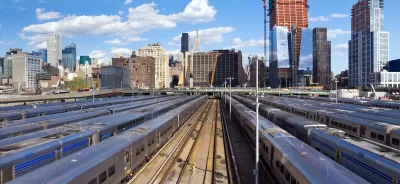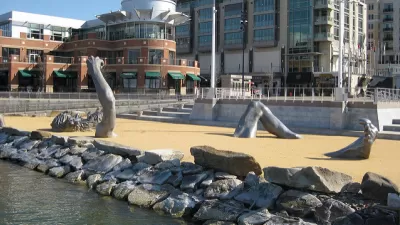Transit stations increase nearby jobs and populations, but they could also contribute to displacement. What can we do differently?

Smart Growth America's analysis in Shelterforce reveals the complex dynamics of transit-oriented development (TOD), where growth and displacement risks intersect. According to research cited by Smart Growth America, transit station areas generated 20 percent of metropolitan job and household growth while occupying less than 1 percent of urbanized land across 42 regions, with rail transit increasing nearby property values 15-25 percent above baseline increases.
While TOD successfully attracts diverse populations and promotes sustainability, rising costs threaten existing residents. Light rail and streetcar areas saw median incomes rise 9 percent faster than surrounding regions, highlighting gentrification concerns. Seattle's Capitol Hill and Portland's MAX light rail corridor demonstrate how transit improvements can inadvertently drive displacement.
However, the article highlights successful mitigation strategies from several cities. Arlington's Rosslyn-Ballston corridor shows how proactive zoning and affordable housing policies can prevent accelerated displacement while fostering economic growth. Other solutions include Denver's TOD Fund for preserving affordable housing near transit and San Francisco's Small Sites Program supporting nonprofit acquisition of affordable rental properties.
The piece emphasizes that successful TOD requires balancing development goals with equity considerations through robust community engagement and protective policies.
FULL STORY: Can We Resist Displacement From Transit-Oriented Development?

Planetizen Federal Action Tracker
A weekly monitor of how Trump’s orders and actions are impacting planners and planning in America.

Congressman Proposes Bill to Rename DC Metro “Trump Train”
The Make Autorail Great Again Act would withhold federal funding to the system until the Washington Metropolitan Area Transit Authority (WMATA), rebrands as the Washington Metropolitan Authority for Greater Access (WMAGA).

The Simple Legislative Tool Transforming Vacant Downtowns
In California, Michigan and Georgia, an easy win is bringing dollars — and delight — back to city centers.

In These Cities, Most New Housing is Under 441 Square Feet
With loosened restrictions on “micro-housing,” tiny units now make up as much as 66% of newly constructed housing.

Albuquerque’s Microtransit: A Planner’s Answer to Food Access Gaps
New microtransit vans in Albuquerque aim to close food access gaps by linking low-income areas to grocery stores, cutting travel times by 30 percent and offering planners a scalable model for equity-focused transit.

This City Will Pay You to Meet Your Neighbors
A North Kansas City grant program offers up to $400 for residents to throw neighborhood block parties.
Urban Design for Planners 1: Software Tools
This six-course series explores essential urban design concepts using open source software and equips planners with the tools they need to participate fully in the urban design process.
Planning for Universal Design
Learn the tools for implementing Universal Design in planning regulations.
Smith Gee Studio
City of Charlotte
City of Camden Redevelopment Agency
City of Astoria
Transportation Research & Education Center (TREC) at Portland State University
US High Speed Rail Association
City of Camden Redevelopment Agency
Municipality of Princeton (NJ)





























